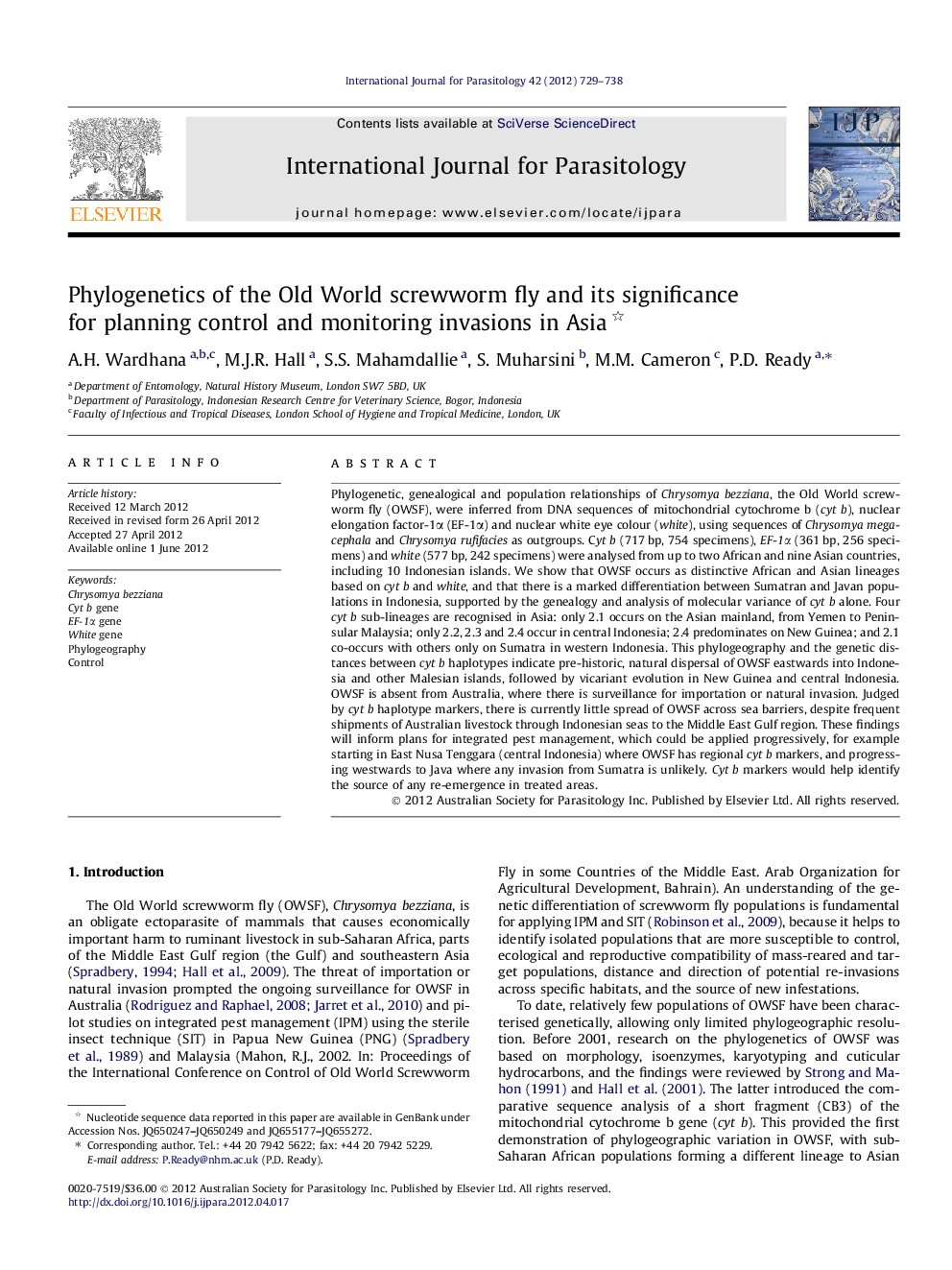| کد مقاله | کد نشریه | سال انتشار | مقاله انگلیسی | نسخه تمام متن |
|---|---|---|---|---|
| 2436075 | 1107269 | 2012 | 10 صفحه PDF | دانلود رایگان |

Phylogenetic, genealogical and population relationships of Chrysomya bezziana, the Old World screwworm fly (OWSF), were inferred from DNA sequences of mitochondrial cytochrome b (cyt b), nuclear elongation factor-1α (EF-1α) and nuclear white eye colour (white), using sequences of Chrysomya megacephala and Chrysomya rufifacies as outgroups. Cyt b (717 bp, 754 specimens), EF-1α (361 bp, 256 specimens) and white (577 bp, 242 specimens) were analysed from up to two African and nine Asian countries, including 10 Indonesian islands. We show that OWSF occurs as distinctive African and Asian lineages based on cyt b and white, and that there is a marked differentiation between Sumatran and Javan populations in Indonesia, supported by the genealogy and analysis of molecular variance of cyt b alone. Four cyt b sub-lineages are recognised in Asia: only 2.1 occurs on the Asian mainland, from Yemen to Peninsular Malaysia; only 2.2, 2.3 and 2.4 occur in central Indonesia; 2.4 predominates on New Guinea; and 2.1 co-occurs with others only on Sumatra in western Indonesia. This phylogeography and the genetic distances between cyt b haplotypes indicate pre-historic, natural dispersal of OWSF eastwards into Indonesia and other Malesian islands, followed by vicariant evolution in New Guinea and central Indonesia. OWSF is absent from Australia, where there is surveillance for importation or natural invasion. Judged by cyt b haplotype markers, there is currently little spread of OWSF across sea barriers, despite frequent shipments of Australian livestock through Indonesian seas to the Middle East Gulf region. These findings will inform plans for integrated pest management, which could be applied progressively, for example starting in East Nusa Tenggara (central Indonesia) where OWSF has regional cyt b markers, and progressing westwards to Java where any invasion from Sumatra is unlikely. Cyt b markers would help identify the source of any re-emergence in treated areas.
Figure optionsDownload high-quality image (125 K)Download as PowerPoint slideHighlights
► Cyt b and white genes distinguish Asian and African lineages of the screwworm fly.
► Phylogeography indicates a prehistoric spread from mainland Asia to New Guinea.
► Cyt b markers signal no current dispersal from Indonesia to the Middle East Gulf region.
► Infrequent dispersal across sea barriers favours integrated pest management.
► Flies isolated on Indonesian islands and in drier Middle Eastern areas are candidates for control.
Journal: International Journal for Parasitology - Volume 42, Issue 8, July 2012, Pages 729–738